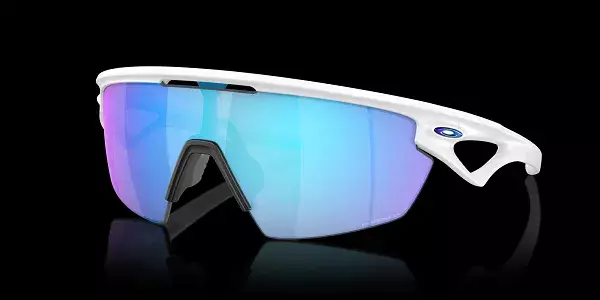Meta Platforms, Inc. is making significant strides in the rapidly evolving field of augmented reality (AR) with its forthcoming releases in smart glasses technology. Catering specifically to athletes and performance enthusiasts, the company is set to introduce an updated version of its smart glasses later this year. This ambitious venture reflects not only a commitment to enhancing athletic performance through innovative wearables but also hints at Meta’s broader goals in the interactive tech landscape.
Recent reports have highlighted Meta’s development of athletic-centric smart glasses, inspired by the popular Oakley “Sphaera” style. This new design promises to maintain a lightweight profile while integrating a single camera positioned centrally in the frame. By keeping the design minimalistic, the glasses aim to provide users with essential performance tracking without adding unnecessary bulk. This strategic move is notable as it aligns with a growing trend of intertwining sports equipment with advanced technology, presenting an opportunity for athletes to gain real-time feedback on their performance metrics.
The partnership with Oakley is significant given that the brand is part of EssilorLuxottica, which also owns Ray-Ban—another brand Meta has engaged with previously. This collaboration allows Meta direct access to well-established lens technologies and frame styles, leading to the creation of aesthetically pleasing and functional wearables. The relationship symbolizes a merging of style and practicality, a crucial attribute for attracting young and active consumers.
Meta fans and industry watchers can look forward to the evolution of the company’s smart glasses lineup, notably the redesigned Ray-Ban stories that now rebranded as “Ray-Ban Meta.” Set for release later this year, these glasses are not just a cosmetic upgrade but will include a heads-up display that allows users to receive notifications, display images, and run basic apps. However, it’s essential to note that these functionalities will not embody full AR capabilities—they’re an interim step towards more sophisticated applications in the coming years.
Looking ahead, Meta envisions a future where fully functional AR glasses become commonplace, although this vision might take time to realize. Plans for launching such devices have been projected for 2027, aligning with the company’s intent to develop cost-effective production methods. By reducing manufacturing expenses, Meta aims to make AR technology more accessible to the general public, in stark contrast to other high-priced offerings in the market.
Meta’s pricing strategy reflects a conscious effort to encourage adoption of its wearable technology. The newer smart glasses are expected to be priced significantly higher than the current Ray-Ban Metas. Despite the steep costs, Zuckerberg has a visionary approach—predicted future AR glasses may reach a price point comparable to high-end smartphones or laptops. Such a shift could facilitate the transition to a lifestyle where smart glasses become a primary technology for communication and interaction, eventually surpassing smartphones in ubiquity and necessity over the next decade.
However, this projected growth is contingent upon changing consumer habits and social dynamics; for Meta, this means fostering a cultural shift that normalizes the use of smart glasses. Nevertheless, the anticipated price points will require strategic marketing efforts and clear demonstration of the glasses’ value to overcome initial consumer resistance.
An intriguing aspect of Meta’s strategy is its potential alignment with political elements, specifically the anticipated interactions with the incoming Trump administration. Given that many of Meta’s components are sourced from overseas, particularly China, there exists a tangible risk that trade tariffs could complicate production and inflate costs. Zuckerberg’s relationship with the Trump administration could play a critical role in facilitating more favorable trade terms, potentially smoothing the path for Meta’s expansive ambitions.
Navigating political landscapes will likely have significant implications for Meta’s operations as the company strives to push forward in AI, AR, and VR. As regulations evolve, the interplay between innovation and governance will become increasingly intertwined, posing challenges that Meta must address for successful expansion.
Meta’s upcoming wave of smart glasses represents a significant leap towards a future imbued with augmented reality. By focusing on athletic applications and establishing collaborative partnerships, Meta is meticulously crafting a product that prioritizes functionality and user experience. However, the company’s success hinges not just on technological advancements but also on its ability to adeptly navigate market dynamics and political landscapes. As Meta forges ahead, it remains poised to shape the landscape of wearable tech while redefining user interactions in daily life.

